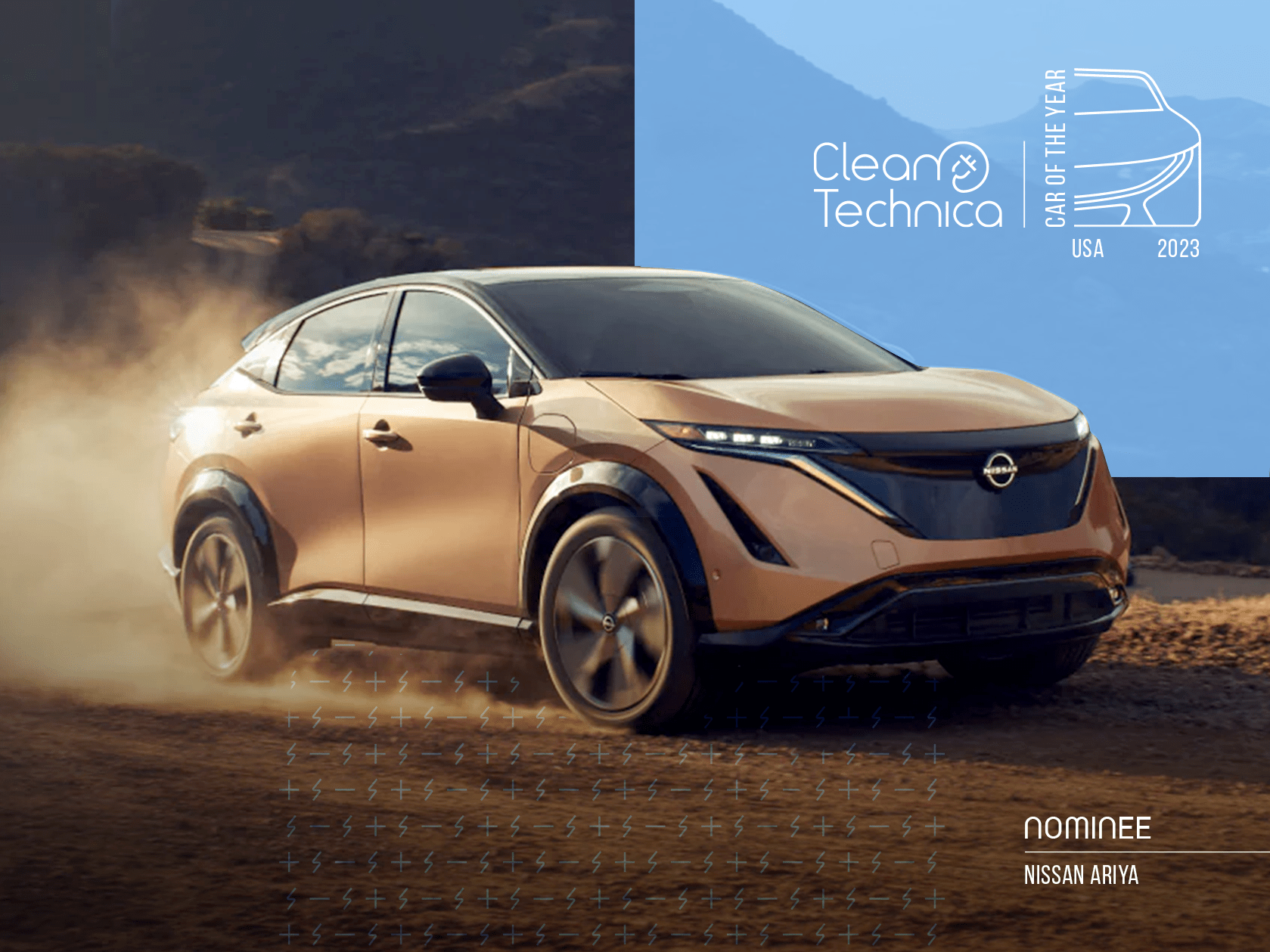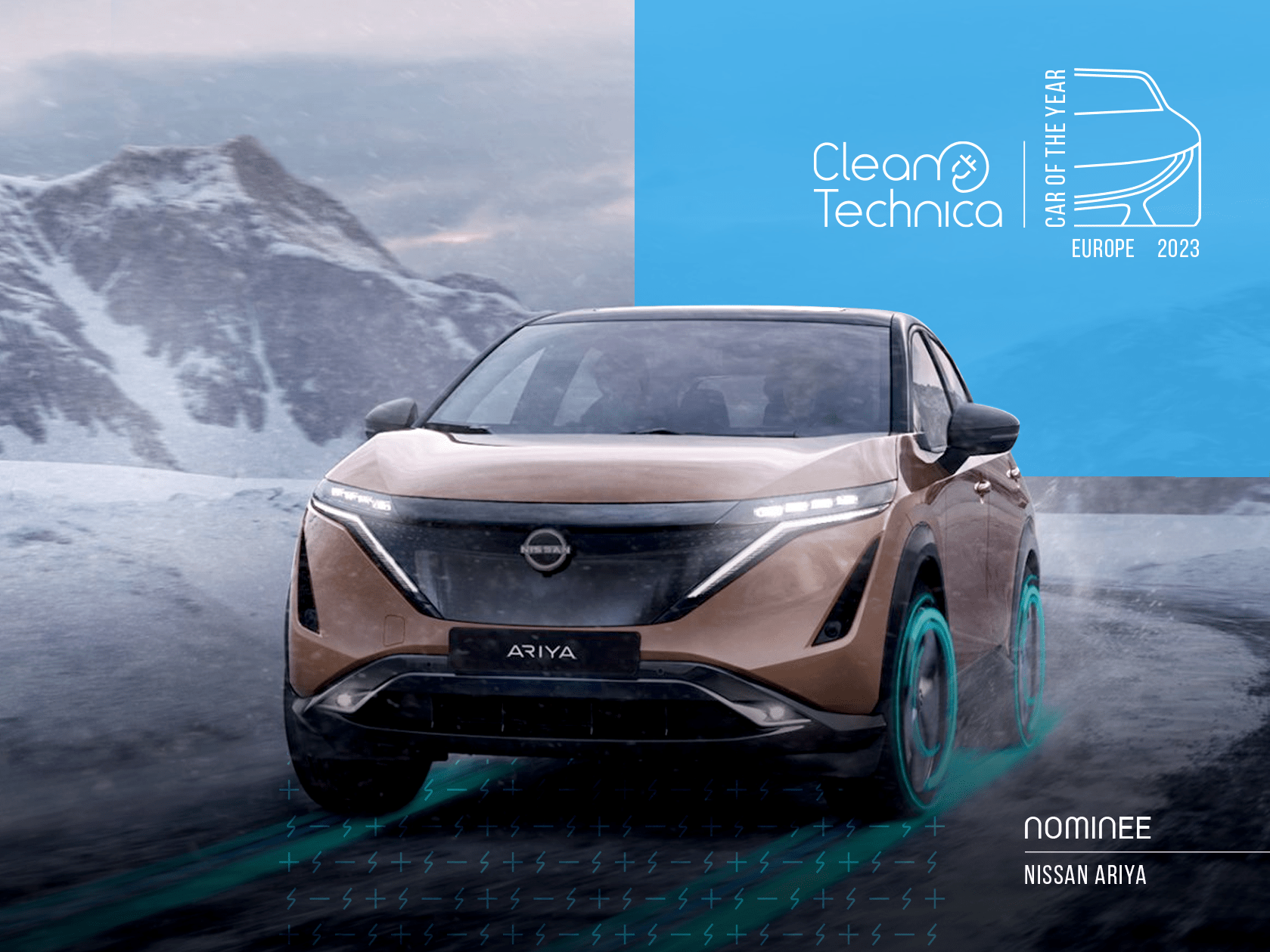Sign up for daily news updates from CleanTechnica on email. Or follow us on Google News!
File this under “awards I didn’t know existed before today.” Nonetheless, it’s an award, and it seemingly shows something positive about the Nissan Ariya — which has become one of the top EV sellers in the US.
“Highlighting its commitment to delivering exceptional value and reliability to pre-owned customers, Nissan has received six honors in the 12th annual Vincentric Best Certified Pre-Owned (CPO) Value in America Awards,” Nissan writes, tooting its own horn. Aside from winning in the “SUV Brand” category and the “Passenger Car Brand” category, Nissan also won four model-specific awards. That includes the Nissan Ariya winning in the “Compact SUV” segment.
Notably, this isn’t the Ariya competing against other electric vehicles — it’s in competition with all other compact SUVs. “From the all-electric Nissan Ariya to the iconic Nissan Z, each award-winning model exemplifies Nissan’s innovation and dedication to quality,” the company adds. (The Nissan Kicks and Nissan Versa are the other two models that won the award for their vehicle class.)
“Customers are at the heart of all we do, and CPO value is yet another way our strong product lineup is delivering what they’re looking for,” Judy Wheeler, vice president of Nissan Sales & Regional Operations at Nissan U.S., says. “Earning recognition across multiple segments underscores Nissan’s commitment to delivering affordability and quality throughout the vehicle lifecycle.”
While the Nissan LEAF didn’t win an award, the company notes that it was identified as having the lowest total cost of ownership in its class.
We’ve gotten all the way down here without fully explaining what this competition includes. Here’s how Nissan summarizes it: “The Vincentric Best CPO Value in America Awards are determined through a comprehensive analysis of total cost of ownership and current market prices to identify the models offering the best value in each segment. Cost of ownership is determined using eight factors: Depreciation, fees and taxes, financing, fuel, insurance, maintenance, opportunity cost and repairs. A statistical model then identifies when vehicles have lower-than-expected ownership costs in their segment.”
Some people may see this as just another obscure award, but I actually think this is a huge one. At a time when people are still struggling with post-COVID inflation and the higher and higher costs of car ownership, this is specifically an area where many buyers are going to want their cars to shine. We did total cost of ownership analyses for a long time, and it’s inherently a tricky business full of assumptions. But it’s important to look at if you don’t have thousands of dollars to throw away without thinking about it. Getting a third-party analysis on the matter crunching numbers at a professional level and hopefully weeding out any bias is a great way to do the work without doing the work. Again, I wasn’t familiar with this award before today, but it’s one analysis and you can always still do your own comparisons and make your own assumptions to see what you come up with when trying to compare models you might buy. Go ahead and see if you come to the same conclusion!
Have a tip for CleanTechnica? Want to advertise? Want to suggest a guest for our CleanTech Talk podcast? Contact us here.
Sign up for our daily newsletter for 15 new cleantech stories a day. Or sign up for our weekly one if daily is too frequent.
CleanTechnica uses affiliate links. See our policy here.
CleanTechnica’s Comment Policy





